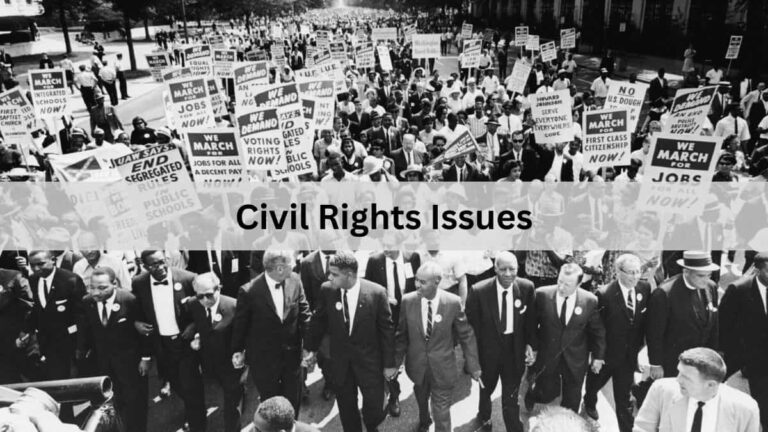Bluefire Wilderness Lawsuit – What Parents Need To Know!
When it comes to finding help for troubled teens, many parents turn to wilderness therapy programs. These programs, known for their outdoor adventures and focus on personal growth, have become increasingly popular as alternatives to traditional therapy.
One such program, BlueFire Wilderness, has been under scrutiny in recent years due to serious allegations that have surfaced against it. While wilderness therapy can offer positive outcomes for some families, the lawsuit against BlueFire raises significant questions about the safety and efficacy of such programs.
In this article, we’ll delve into the details of the BlueFire Wilderness lawsuit, explore its impact on both students and their families, and provide essential insights for parents considering wilderness therapy. We’ll also discuss the larger implications for similar programs and how parents can make informed decisions when selecting the right treatment for their child.
What Is BlueFire Wilderness?
BlueFire Wilderness is a wilderness therapy program that combines outdoor expeditions with therapeutic interventions to help troubled teens. Based in Idaho, the program is designed for adolescents struggling with a range of issues, including behavioral problems, mental health challenges, and substance abuse. The program promises a healing journey that fosters personal growth through activities like hiking, camping, and survival skills, combined with one-on-one therapy and group counseling.

Wilderness therapy has been viewed as a way to remove teens from negative influences, allowing them to reset in a natural, challenging environment. For many families, the program has served as a last resort when traditional therapy methods have failed. However, the recent lawsuit against BlueFire Wilderness has raised concerns about the practices used within the program.
Read More: Rssawee – Unlock Your Business Potential!
Overview of the BlueFire Wilderness Lawsuit:
The lawsuit against BlueFire Wilderness was brought forward by several former students and their families, alleging abuse, negligence, and emotional harm suffered while enrolled in the program. According to the plaintiffs, the program failed to provide the level of care and supervision promised, and instead, exposed students to unsafe conditions, both physically and emotionally.
Some of the key allegations include:
- Negligent supervision: Many parents have claimed that their children were left unsupervised for extended periods in harsh outdoor conditions, leading to physical injuries.
- Emotional and psychological harm: Some former students have reported emotional abuse and undue stress, which they believe worsened their mental health conditions rather than helping them heal.
- Inadequate medical care: Allegations also include instances where students required medical attention but were either delayed or denied care, resulting in worsened physical conditions.
- Physical mistreatment: Several former students have reported instances of being forced to endure physically grueling tasks without proper support, leading to exhaustion and injuries.
The lawsuit has sparked concern among parents, advocates, and those involved in youth treatment programs, as it brings to light potential flaws in the regulation and oversight of wilderness therapy programs.
Implications for Parents and Teens:
For parents considering wilderness therapy, the BlueFire lawsuit is a cautionary tale. The allegations against the program serve as a reminder that while these programs may offer promising outcomes, there are risks involved if they are not properly run.

The lawsuit has broader implications for the wilderness therapy industry as a whole, shining a light on the importance of thorough research and due diligence when selecting a program for a child.
Read More: Stay Stylish and Safe with Fashion-Forward Self-Defense
Is Wilderness Therapy Safe?
Wilderness therapy has been praised for its ability to remove teens from negative environments and offer them a fresh perspective on their lives. The program’s structure, which combines physical challenges with therapy, can be transformative for many teens. However, safety concerns are paramount when it comes to these programs. The isolated settings and physical demands can put students at risk if the programs are not properly staffed or if safety protocols are not strictly followed.
In response to the lawsuit, many parents are now questioning the safety of wilderness therapy in general. While not all programs engage in unsafe practices, the BlueFire case has highlighted the need for stronger regulation and oversight. Families should carefully vet any wilderness therapy program they are considering, asking questions about staff qualifications, safety measures, and the program’s approach to addressing individual mental health needs.
How to Choose a Safe Wilderness Therapy Program?
If you’re a parent exploring wilderness therapy for your child, it’s crucial to take steps to ensure the program is safe, ethical, and effective. Here are some essential tips to keep in mind:
1. Research the Program’s Reputation:
Before enrolling your child in any program, research its reputation thoroughly. Look for reviews, testimonials, and any news reports that mention the program. Speak with other families who have gone through the program to understand their experiences.
2. Verify Accreditation and Licensing:
Make sure that the program is accredited by reputable organizations such as the Outdoor Behavioral Healthcare Council (OBH Council) or the Association for Experiential Education (AEE). Accreditation ensures that the program adheres to certain safety and ethical standards.
3. Ask About Staff Training and Qualifications:

Qualified staff members are critical to the safety and success of any wilderness therapy program. Ensure that therapists are licensed mental health professionals and that field guides have adequate training in wilderness survival, first aid, and handling emergencies.
4. Understand the Program’s Therapeutic Approach:
Ask detailed questions about how the program integrates therapy into its outdoor activities. What is the ratio of therapy sessions to outdoor activities? How are individual mental health needs addressed? Understanding the therapeutic approach can help ensure that the program will be a good fit for your child.
5. Inquire About Safety Protocols:
Safety should be the top priority of any wilderness therapy program. Ask how the program handles medical emergencies, how often students are supervised, and what safety measures are in place to prevent accidents or injuries. Clear safety protocols should be a non-negotiable factor when making your decision.
Read More: Mikki Mase Net Worth – Financial Success!
What Can Parents Do If Their Child Is Harmed?
If your child has been harmed in a wilderness therapy program, it’s important to take immediate action. Document any injuries or emotional harm, and seek medical and psychological support for your child. You may also want to consult with an attorney who specializes in youth treatment or education law to explore your legal options.
The BlueFire Wilderness lawsuit has set a precedent for holding such programs accountable, and more families are coming forward to share their stories. Legal action can not only provide justice for your family but also help prevent future incidents in other programs.
FAQs:
1. What is the BlueFire Wilderness lawsuit about?
The BlueFire Wilderness lawsuit alleges negligence, emotional and physical harm, and inadequate medical care provided to students enrolled in the wilderness therapy program.
2. Are all wilderness therapy programs unsafe?
Not all wilderness therapy programs are unsafe. However, the BlueFire Wilderness lawsuit has raised concerns. It’s important to thoroughly research any program before enrolling your child to ensure safety and care.
3. How can I tell if a wilderness therapy program is safe?
To avoid issues similar to those in the BlueFire Wilderness lawsuit, look for accreditation, inquire about staff qualifications, understand the program’s therapeutic approach, and ask about safety protocols. Speaking with families who have used the program can provide valuable insights.
4. What are the key allegations against BlueFire Wilderness?
The BlueFire Wilderness lawsuit centers around key allegations, including negligent supervision, emotional and psychological harm, inadequate medical care, and physical mistreatment of students.
5. What should I do if my child has been harmed in a wilderness therapy program?
If your child has been harmed, as alleged in the BlueFire Wilderness lawsuit, seek immediate medical and psychological care, document the harm, and consult with an attorney to explore your legal options.
6. Is wilderness therapy effective for troubled teens?
Wilderness therapy can be effective for some teens, but as the BlueFire Wilderness lawsuit suggests, success depends on the quality, safety, and ethical standards of the program.
7. How do wilderness therapy programs work?
Wilderness therapy programs, like BlueFire Wilderness, combine outdoor activities such as hiking and camping with therapeutic interventions like one-on-one counseling and group therapy sessions. The BlueFire Wilderness lawsuit highlights the importance of safety and proper supervision in these programs.
8. What should I look for in a wilderness therapy program?
To avoid issues like those raised in the BlueFire Wilderness lawsuit, look for accreditation, well-trained staff, a clear therapeutic approach, and stringent safety measures. Ensuring proper regulation and oversight is critical.
9. Can I take legal action against a wilderness therapy program?
Yes, if your child has been harmed in a program similar to the one mentioned in the BlueFire Wilderness lawsuit, you can pursue legal action. It’s recommended to consult with an attorney who specializes in youth treatment cases.
10. Are there alternatives to wilderness therapy?
Yes, there are alternatives to programs involved in lawsuits like the BlueFire Wilderness lawsuit. These include traditional therapy, residential treatment programs, and family therapy. Each option should be evaluated based on the specific needs of your child.
Conclusion:
The BlueFire Wilderness lawsuit serves as a wake-up call for both parents and the wilderness therapy industry. While these programs can be incredibly beneficial for some teens, they must be carefully vetted to ensure safety and efficacy. Parents should not only rely on program marketing but should also conduct thorough research, ask tough questions, and advocate for the well-being of their children.
Wilderness therapy programs, when run properly, can offer a life-changing experience for troubled teens. However, the allegations against BlueFire Wilderness remind us that safety and ethical practices should never be compromised in the name of personal growth.
Read More:



